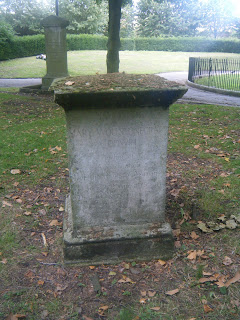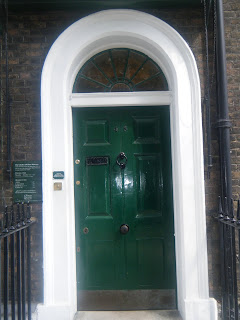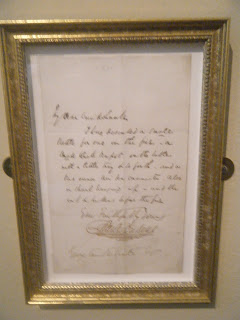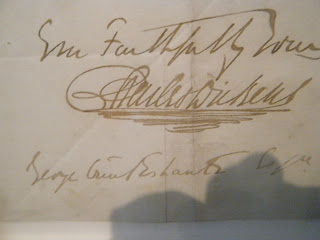This is one of the oldest churches in London, and is still the local parish for many people in that area. But while the church itself was great, one of the nicest things about the church is its gardens. Yes, when you walk through the gardens you're walking in between peoples' graves, but the gardens are maintained beautifully so it's not so obvious that you're walking through a graveyard.
But while I was walking through, I found a very nice surprise! Nestled in the middle of the garden is a tree that has been dubbed The Hardy Tree. This tree reminded me of Emrys's lecture our first week here, where he talked about London myths. For me, this tree represented one of them. According to legend, when Hardy was a young man he worked for a man at the church and when the railroad was being built it ran right through St. Pancras church. Apparently, Hardy was given the task of removing the headstones and setting them around the tree, as the bodies were exhumed for reburial.
 |
| The Hardy Tree |
 |
| Headstones stacked around the base of the tree |
It's an interesting story, and whether it's true or not, it definitely adds something to London's history!
But the main thing I came to see at St. Pancras were the graves of William Godwin and Mary Wollstonecraft, the parents of Mary Shelley. It's surprising, because the location of their graves is not very obvious but after much searching, I finally found them!
 |
| The Godwin family plot |
 |
| Grave of Mary Wollstonecraft |
 |
| Grave of William Godwin |
Rumor has it that it was over her parents' graves where Mary Shelley professed her love for Percy Bysshe Shelley.
My last myth of London comes from this famous crypt:
This is actually the family crypt of Sir John Soane, and legend has it that it was his crypt that inspired the design for the red phone booths that have become iconic images of London!
Whether it's true or not, it still makes for an interesting story!
























